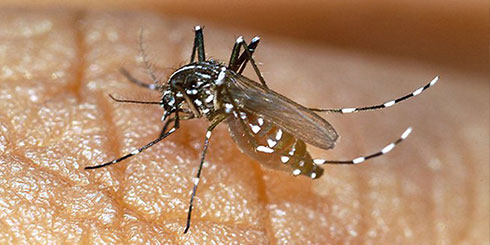
One of the best parts of summer is having the time to do some of the things you really enjoy. This can mean long bike rides, camping, hiking, and all kinds of outdoor activities. Whichever ones you’re involved in, you’ll have more fun and be safer if you know your bug basics.
 BUSY BEES
BUSY BEES
Bees travel in a straight line back and forth from their hives; avoid getting in their line of flight. Don’t disturb nests or hives. If you do get stung, check to see if the stinger is still in the skin (bees sting only once, leaving their stingers, and then die, awww), but don’t pull it out because this allows more venom to escape. Gently scrape it off with a flat object like the dull edge of a knife. For pain and swelling, try applying a paste of baking soda. For itching and swelling, use an antihistamine cream. Remember, wasps love sweet food, so keep food and drinks covered while outside and don’t wear sweet-smelling perfumes, gels or hairsprays.
MOSQUITOES
Mosquito bites, although not serious for most people, can be uncomfortable. Prevent bites by using insect repellent; or diluted citronella (an essential oil) on your skin or by placing candles around you and covering as much skin as possible. Avoid being outside at sundown, when mosquitoes are at their worst, and stay away from areas of stagnant water; breeding grounds for mosquitoes.
DEER TICKS
Deer ticks are a major concern in some parts of North America because they can be Lyme disease carriers. Found most commonly in the American Northeast, Midwest and West, these ticks hide mostly in shady, tall grass, although they can be found in shrubs, lawns and gardens as well. To avoid being bitten by a tick, wear long pants tucked into socks or boots to keep ticks off your legs. Wear closed shoes (no sandals). After your hike, check your body for ticks, especially the insides of knees and elbows and the neck just below the hairline. If you find a tick, don’t panic. Don’t grab it or squeeze it off. Instead, using small tweezers, grasp the tick by the head and pull it out, then kill it by placing it in alcohol. Don’t cover it with anything or try to kill it while it’s on the skin, as this could release more toxins. Once the tick is removed, watch the site for a rash — it can begin up to one month following the bite. If you’re concerned, call your doctor.


 BUSY BEES
BUSY BEES
What Do You Think? Leave A Comment!